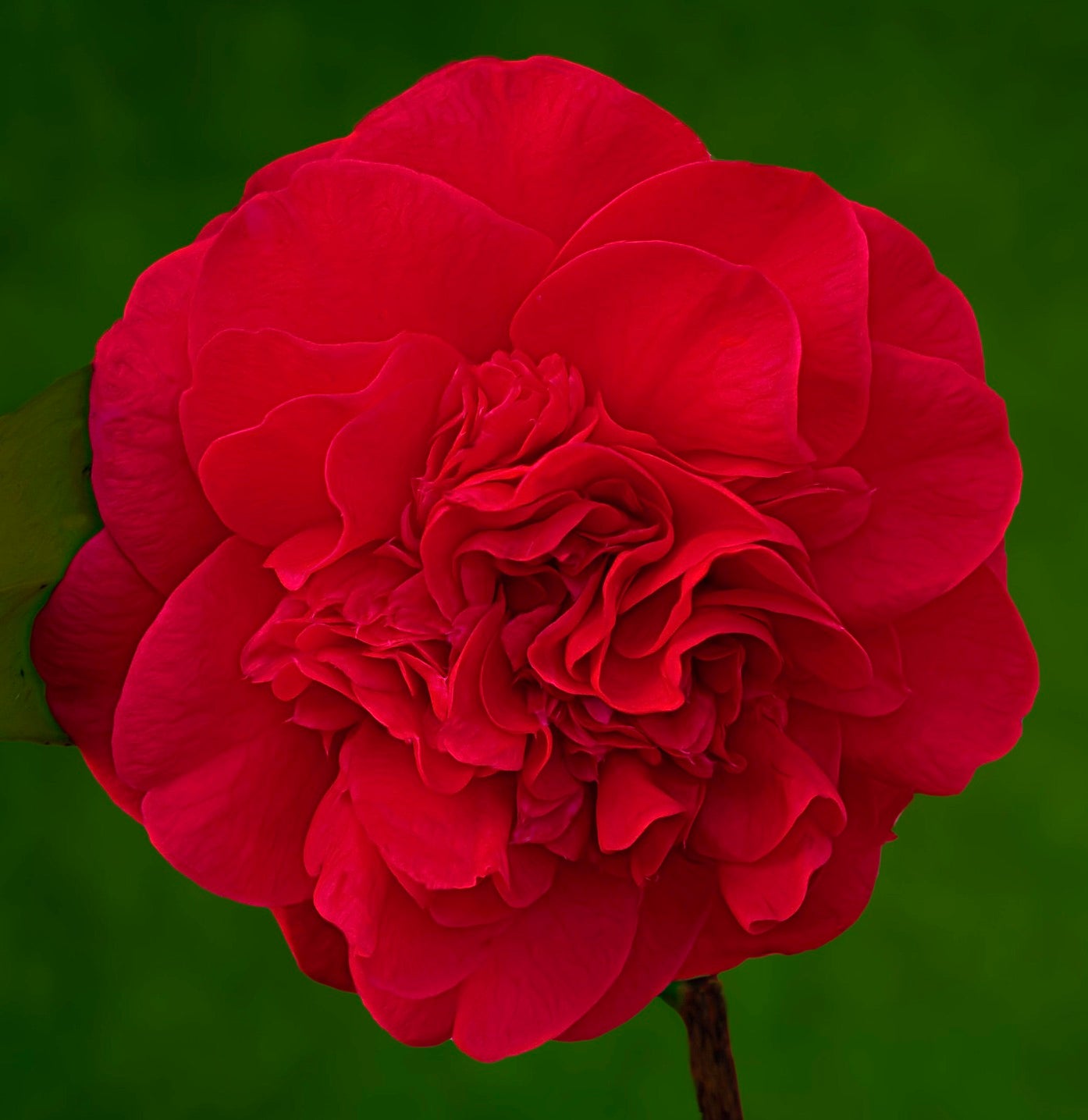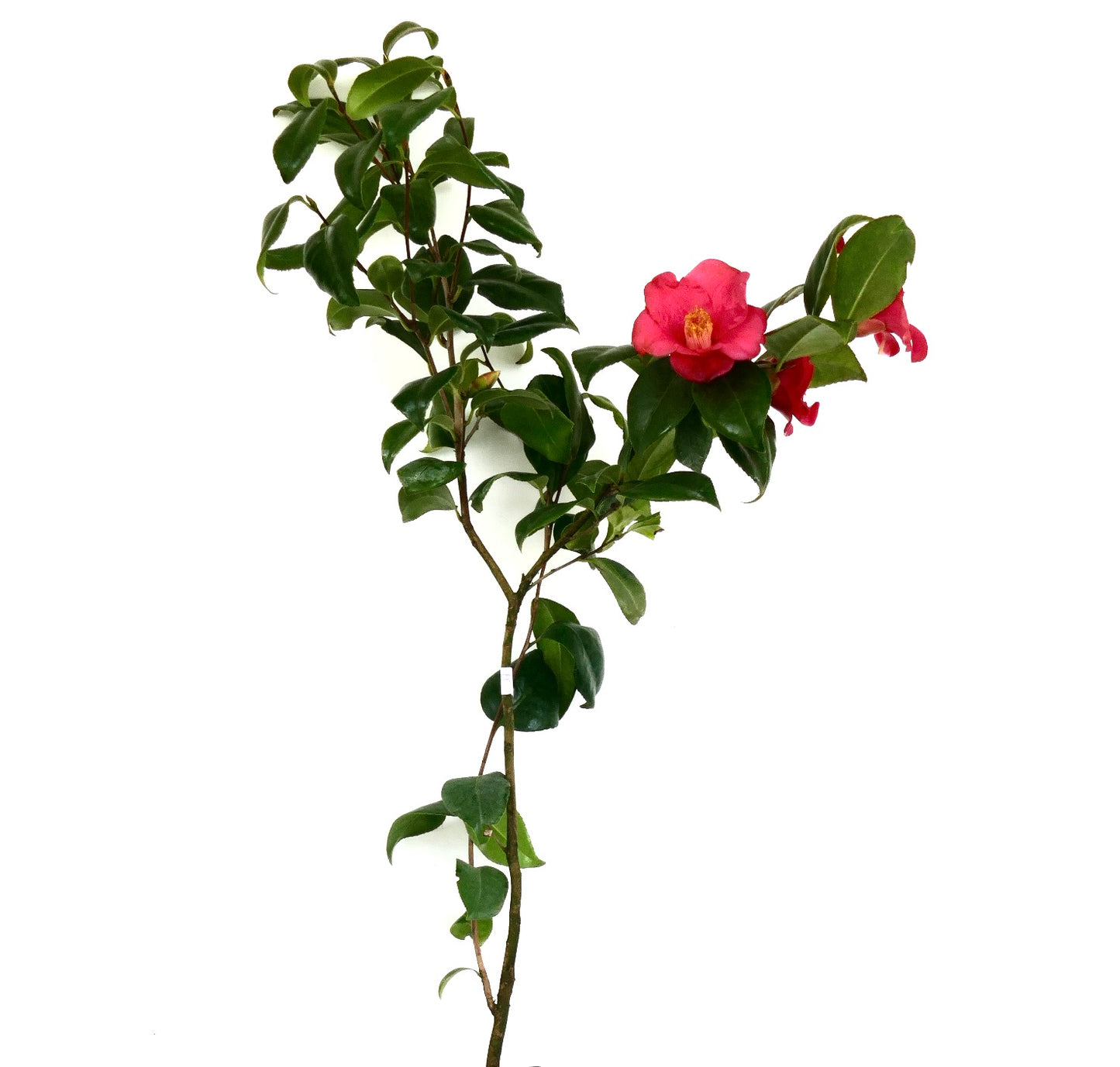- Catalogue Plants
Camellia japonica cv MARIA ANTONIETTA
Camellia japonica cv MARIA ANTONIETTA
Couldn't load pickup availability
Plant Description
Camellia japonica cv MARIA ANTONIETTA is red flower cultivar of the commonly Japanese Camellia, is a beloved and exquisite evergreen shrub or small tree admired for its stunning, waxy blooms and glossy, dark green foliage. This ornamental plant is native to East Asia and has become a favorite in gardens worldwide.
Camellia japonica is a slow-growing, evergreen shrub that typically reaches heights of 6 to 12 feet (1.8 to 3.7 meters), although some cultivars can grow taller. It features glossy, leathery, dark green leaves that provide an attractive backdrop to its striking, waxy flowers. The most prominent feature of this camellia species is its elegant blooms, which vary in color, including shades of white, pink, red, and even variegated varieties. These blooms are typically large, with layers of delicate, petal-like structures that create a visual masterpiece in late winter to early spring. Japanese Camellias are known for their longevity and can live for many decades, providing years of beauty in gardens.
Cultivation:
-
Climate: Camellia japonica thrives in temperate climates and is best suited to USDA hardiness zones 7 to 9. It prefers mild winters and cool, moist summers.
-
Sunlight: Plant Japanese Camellia in a location that receives filtered or dappled sunlight. While it can tolerate partial shade, it blooms best in bright, indirect light.
-
Soil: Ensure well-draining, acidic to slightly acidic soil with good organic content. Camellias prefer soil with a pH range of 5.5 to 6.5. Amending the soil with organic matter can improve drainage.
-
Watering: Keep the soil consistently moist but not waterlogged. Water deeply and regularly, especially during dry spells, but avoid letting the roots sit in standing water.
-
Mulching: Apply a layer of organic mulch, such as compost or pine straw, around the base of the shrub to conserve soil moisture, regulate temperature, and suppress weeds.
-
Fertilization: Feed Camellia japonica with a specialized, acidic fertilizer formulated for camellias and other acid-loving plants. Apply in the spring after flowering and again in late summer or early autumn.
-
Pruning: Prune as needed to maintain the desired shape and size. Camellia japonica tolerates light pruning for shaping, but avoid heavy pruning, as it can reduce flower production.
-
Pests and Diseases: Watch for common camellia pests like aphids, scale insects, and spider mites. Regular inspection and prompt treatment can help control infestations. Camellias can also be susceptible to fungal diseases, so ensure good air circulation and avoid overhead watering.
-
Propagation: Japanese Camellias can be propagated through seeds, hardwood cuttings, or by air layering. Seeds require special treatment, such as scarification and stratification, for germination.
Camellia japonica is a cherished addition to gardens, providing a burst of vibrant color during the winter and early spring months when few other plants are in bloom. With the right care and attention to its specific needs, this evergreen shrub can thrive and become a centerpiece of beauty in your outdoor landscape.
IMPORTANT: Please be aware that picture 1 show flower of adult plant not for sale, the offer is for a plant in the dimension indicated in title description.
Botanical family: Theaceae
Botanical genus: Camellia
Botanical species: Camellia japonica
SKU:BA-6441-S
Cultivation
Cultivation
Info and Disclaimers
Info and Disclaimers
Plant Height:
Plant Diameter:
Pot Size:
Grafted/Not Grafted:
Disclaimer: Be aware that most plants change across seasons. If present foliage, could have been fallen or change in its color.




